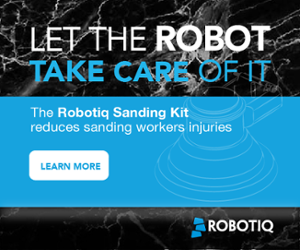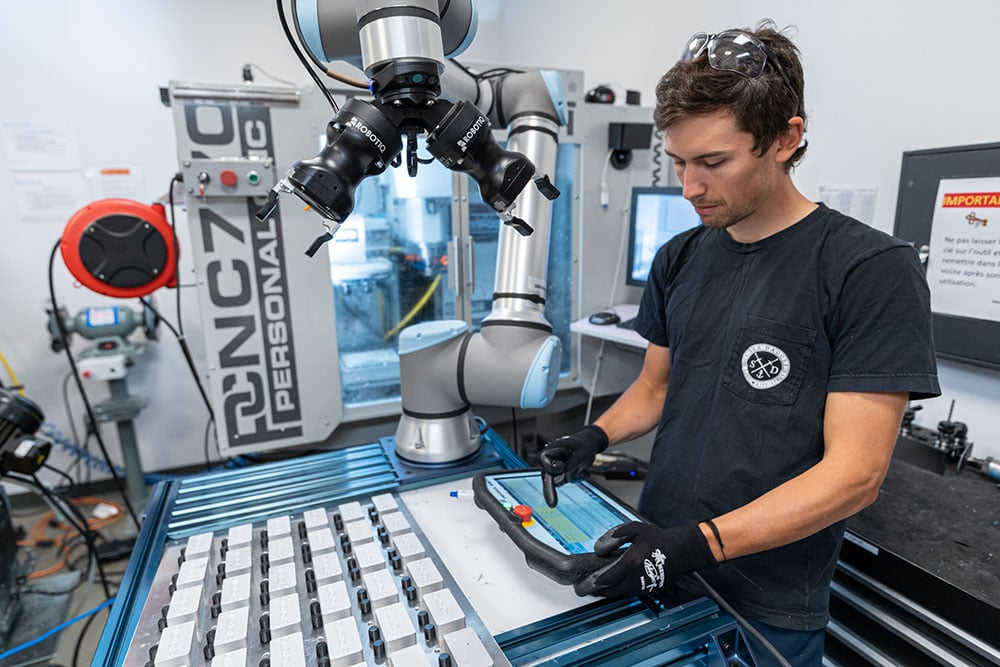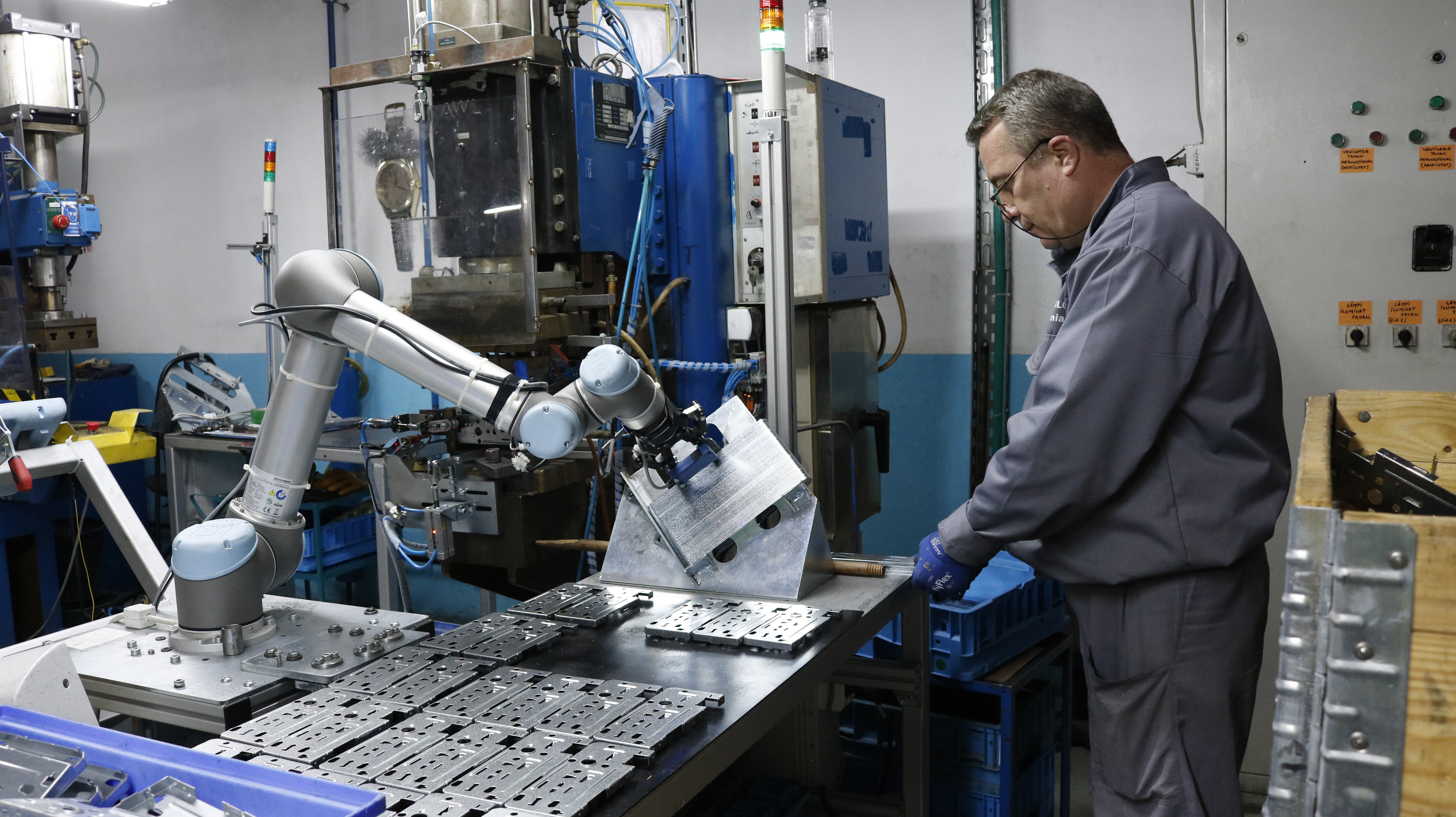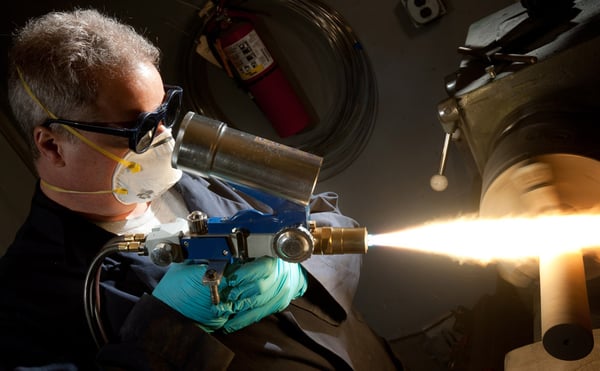Is Safety a Barrier to Widespread Collaborative Robot Adoption?

Posted on Aug 22, 2019 11:02 AM. 5 min read time
Cobots are on the rise, but not everyone uses them yet. Are the high safety limits stopping people from getting into cobots? Some researchers think so.
 Collaborative robots are are designed to function safely around human workers.
Collaborative robots are are designed to function safely around human workers.
Here at Robotiq, we often talk about the growing popularity of collaborative robotics. We are seeing more and more users getting started with cobots, we look at the market reports, and everything suggests that cobots are becoming more and more popular.
We think that cobots will eventually become as ubiquitous as traditional industrial robots. In fact, we think that they will even become more popular than traditional robots for some tasks… because we are already seeing that starting to happen.
But, not everyone thinks that the success of cobots will continue to be inevitable. Some people think that their high safety limits are actually stopping new users from getting on board with this technology.
A team of pan-European academics has been investigating this possibility in their latest research.
Is safety a barrier to widespread collaborative robot uptake?
This 2018 research comes from a team from Germany, France, and Portugal.
The researchers start their paper by declaring:
"The authors of this paper believe that one reason for [the] slow uptake [of cobots] is due to the high requirements on the safety and the lack of engineering tools for analyzing collaborative robotics applications."
A slow uptake of cobots?
First, we need to ask: Is there a slow uptake of cobots?
It's actually quite difficult to say for sure the exact size of the cobot market. As Jeff Burnstein explained at last year's Roboiq User Conference (RUC), we don't really know the size of the cobot market, but it does seem to be growing.
The researchers defined "slow uptake" as being "relatively few collaborative robots in industrial applications compared to standard industrial robots."
I think we can all agree that this is true. There are certainly fewer cobots than traditional industrial robots at the moment.
Personally, I'm not sure that this is a very useful metric to use for comparison because traditional robots have been established for much longer than cobots. However, the researchers' question ("Is safety stopping cobots from becoming more popular?") is still an important one for us to address.
Their proposed solution
The team proposes that a systems engineering framework and dedicated engineering tools could be a better way to analyze the risk of collaborative robots for specific applications.
Using such dedicated tools could allow engineers to reduce the safety limits only to those which are actually needed for the task. This would improve the performance of the cobots whilst keeping humans safe.
Is cobot safety too high? Our experts think… yes!
Are cobots "too safe?"
We have actually discussed the question already over the past year. At RUC 2018, Esben Østergaard of Universal Robots revealed that he thinks the current level of safety for collaborative robots is "super-conservative, bordering on the ridiculous".
He explained, however, that this level of conservativeness is probably necessary at the moment because collaborative robots are still relatively new to the market. People need to be able to trust the robots before they will be happy to see the safety levels reduced.
As a result, the safety limits are set to an extremely cautious level. For example, the maximum force a cobot can apply is defined from the "onset of pain" rather than the "onset of injury" which Esben thinks would be more reasonable.
How high safety limits restrict performance
Collaborative robots are sometimes perceived to be "lower performance" when compared to more traditional industrial robots. This is rather unfair as some cobots have equal-or-better specifications than similarly-sized industrial robots.
However, their safety limits can restrict users from accessing the full power of the robot. If you want to access the full capabilities of a cobot, you often have to override its safety limits.
Some performance factors which are hindered by the robot's safety limits are:
- Speed — One of the most common ways to make cobots safer is to restrict their speed. This reduces the force that they can apply if they hit a human when moving, but it also reduces their speed and productivity for tasks. Most cobots can move much faster than their limits allow.
- Force — Force limits are the main safety limit in collaborative robots. The less force that robots apply to a human or the environment, the less damage they can do. However, cobots often have just as much force capability as industrial robots, as we discussed in the article Why People Believe Cobots Can't Do Finishing Tasks.
- Workflow — A less obvious restriction is the impact that safety limits have on the flow of a robot cell. Every time a human comes near or touches a cobot, it has to stop. This reduces the overall productivity of the cell and makes the whole task less smooth.
All three of these restrictions can be removed or reduced by varying the safety limits of the robot.
At the moment, this is not standard practice with collaborative robots. Users tend to stick to the default (conservative) limits. However, as the European researchers explored, we will be able to improve cobot performance once we have a better way to set these safety limits for the needs of specific tasks.
Should we just get rid of cobot safety limits?
Obviously not!
One of the most useful things about collaborative robots is that they are designed to function safely around human workers. If we were to remove the safety limits completely, this would make them exactly the same as traditional industrial robots… and that implies using cages, advanced sensors, or other safety measures.
As Esben Østergaard explained at last year's RUC, the safety limits are necessarily high right now to aid adoption. Just now, safety limits are defined in quite a simple way and are conservative as a result, as we explained in the article How Safety Levels Are Decided for Cobots.
Over time, our industry will improve the way we define safety levels, perhaps incorporating similar risk analysis methods as those that were outlined by the European researchers.
For now, we've got collaborative robots which are inherently safe (provided you carry out a good risk assessment), and that can only be a good thing.
Yes, the high safety limits may well be discouraging people from adopting cobots. But, this is probably only temporary. It looks very likely that the number of cobot users will continue to rise as more people start to recognize the benefits of the technology.
Do the safety limits stop you from investing in cobots? Tell us in the comments below or join the discussion on LinkedIn, Twitter, Facebook or the DoF professional robotics community.









Leave a comment